Welcome! This is the online home of my RV-7A project.
The RV-7A is an amateur-built kit
airplane from Van's Aircraft. It is a versatile two-seater with impressive STOL, cross country, and
"sport" aerobatic
capabilities. This website will be a living document throughout the
project, and when the time comes will serve as the primary form of
documentation for the FAA.
Hopefully as the project progresses, the information on the website will
also prove useful to other builders.
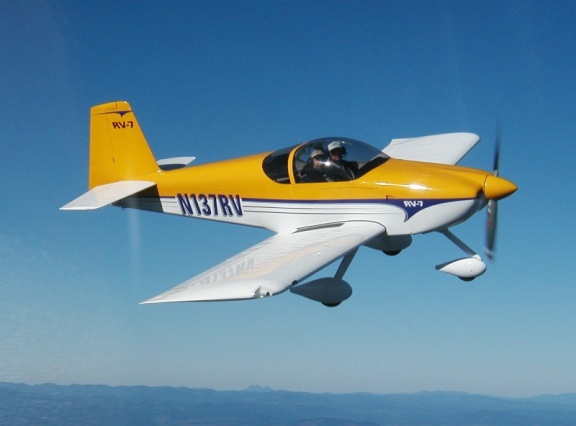
Van's RV-7A demonstrator
-- a glimpse of the finished product
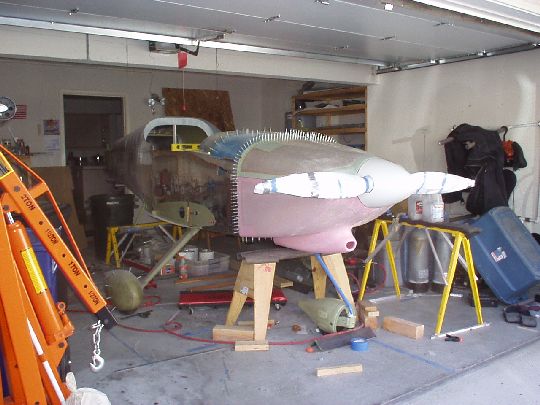
Mine, work in
progress... (photo taken Oct 29, 2011)
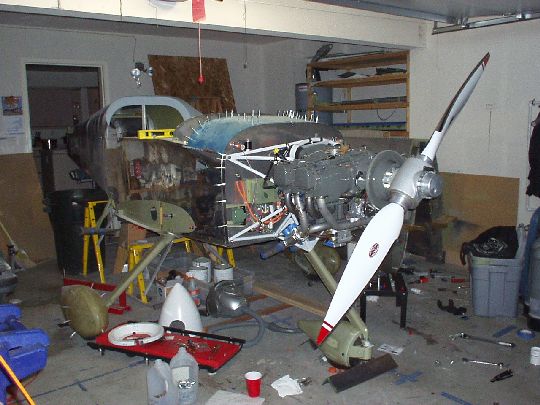
Mine, work in
progress... (photo taken Oct 8, 2011)
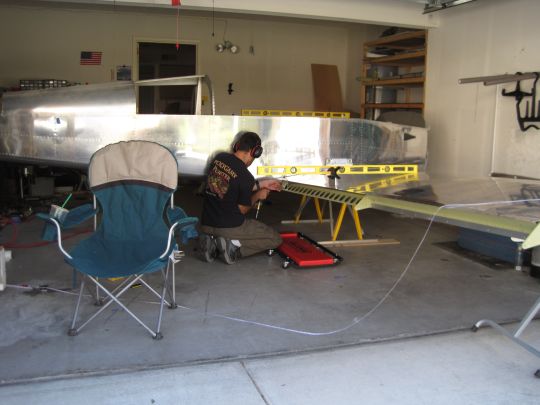
Mine, work in
progress... (photo taken May 8, 2010)
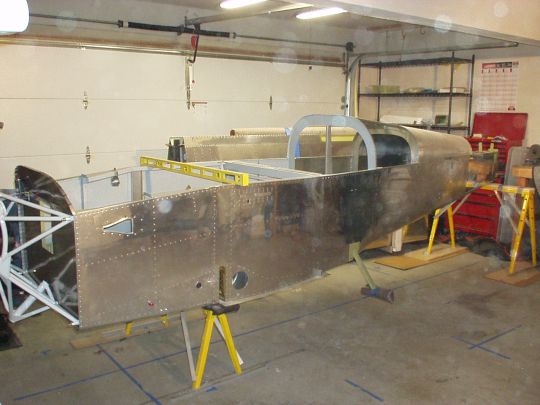
Mine, work in
progress... (photo taken April 13, 2010)
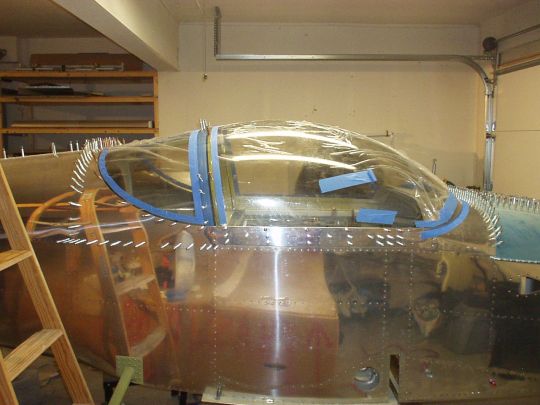
Mine, work in
progress... (photo taken January 24, 2009)
Frequently Asked Questions:
Why a kit plane?
Why an RV?
Why the RV-7A?
Is it an ultralight? Or a light-sport?
Q: Why a kit plane?
A: Partly for the challenge and enjoyment of
building, and partly for the end product. As a kid I used to build
scale and radio control airplanes. So if building little airplanes
is fun, building a big airplane should be a lot of fun. As for the
end product, many modern kit planes far outclass their production
counterparts, and for a fraction of the cost. I presently fly
beat-up old Cessnas, Pipers, and Grummans, which I rent from a club at
obscene hourly rates. Spending a small fortune to own one of these
spam cans doesn't seem very attractive either. Spending a small
fortune however to build and own my dream airplane, that sounds pretty
good ;-)
Q: Why an RV?
A: Long before I ever got my pilot's license I fell in
love with Burt Rutan's EZ series of canard pushers. Such a novel design, a
truly great airplane and within the reach of the average person. That's
probably when the homebuilt seed was first planted in my brain. More
recently, and now a private pilot, I became interested in the Lancair
kits. Fast, sleek, constructed with the most modern materials and
techniques. It was becoming clear I would soon be building some composite
speed machine. Well, when I started to get more serious about building an
airplane it was time to do some systematic research. When I laid out my
wish list along with the constraints of reality I arrived at a clear
winner. An option that I had initially almost ignored, the aluminum RV
series from Van's Aircraft. Although they don't have quite the sexy lines
and inherent coolness of the composites, it is simply the right airplane for the
mission. The biggest factors that distinguished the RV above the rest were
the phenomenal versatility of its performance envelope, sporty yet benign flying
characteristics, economics, and the community of thousands of RV builders and
pilots sharing
their collective knowledge and experience.
Q: Why the RV-7A?
A: By all accounts, all one and two-seater RV models have very
similar flight characteristics (except for the -9, which has a
different wing). The -3, -4, and -6 have been pretty much superceded
by their modernized descendents, the -7 and -8. The -7 is a
descendent of the wildly successful -6,
which has been redesigned to accommodate larger engines up to 200 hp, and
to take advantage of modern CNC manufacturing to produce a
"matched hole" kit. Likewise, the -8 is a descendent of
the -4. The -9 is like a domesticated version of a -7 (more
trainer-like handling, not quite as fast, not aerobatic), which is by
all accounts a very good airplane but I'm not building an airplane to be
tame. And the -10 is a big ol' four-seater, also not what I'm
looking for. So between my top contenders, the -7 and -8, the differences
are primarily in cockpit configuration. While the -8 with its
tandem seating and full bubble canopy is more fighter-like and perhaps
more fun when flying solo, I chose the -7 with its side-by-side seating, which I think is
nicer when carrying a passenger. It also provides a larger
instrument panel and better weight & balance characteristics.
The "A" suffix denotes tricycle landing gear, which I opted
for because as an
engineer I understand the benefits of positive stability (as do
insurance companies). And I'm not interested in arguing about this with the tail dragger cult, to each his
own.
Q: Is it an ultralight? Or a light-sport?
A: No. In the United States, ultralights are limited to a 254 lb empty weight, single occupant, 5 gallon fuel
capacity, 55 knots in level flight, and 24 knots power-off stall. The
new light-sport category is limited to 1320 lb max takeoff weight, 120 knots
in level flight, and 45 knots power-off stall. The RV-7A
weighs in at about 1100 lb empty, can carry two occupants and baggage plus 43 gallons of fuel to
a max gross weight of 1800 lb. It cruises at over 170 knots (that's 200
mph or 320 km/h to non-pilots), and has a power-off stall around 50 knots.
Its operation is regulated in the U.S. by FAR Part 91 just like a Cessna
or Cirrus. The RV is a "real airplane".